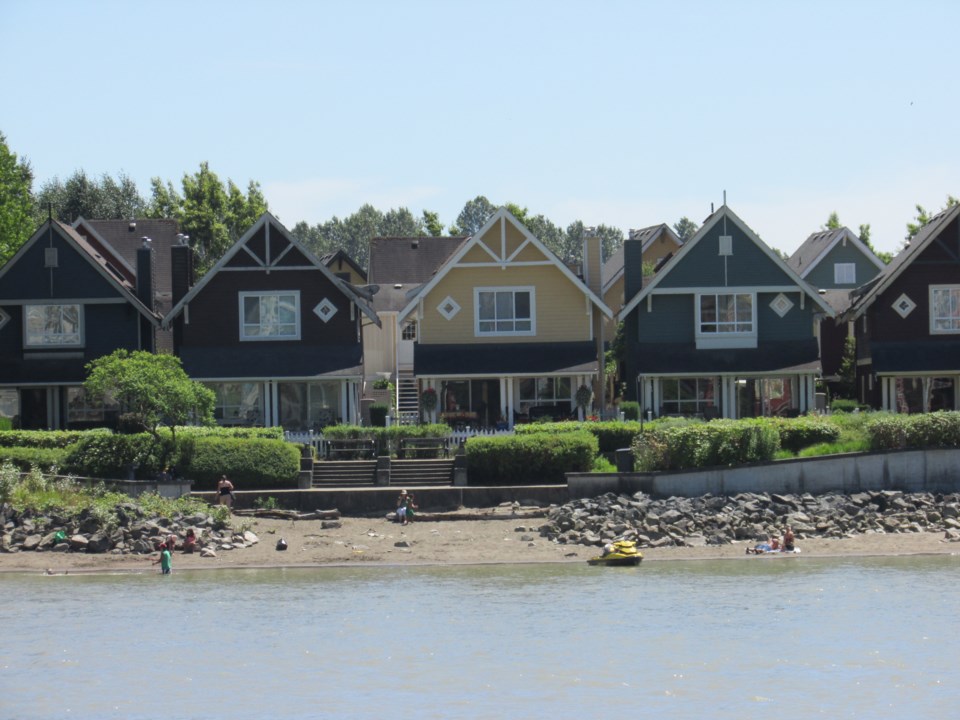Highrises near the 22nd Street SkyTrain station and laneway houses in residential neighbourhoods are among the changes proposed as the city continues to update New Westminster’s official community plan.
On April 25, council received a staff report about the Our City community consultation on a housing process that occurred between November 2015 and February 2016. The 700-plus page document included feedback from the community during the consultation process.
“Generally people within the single-detached dwelling neighbourhoods love what they have and are very excited about the existing character and want to make sure those important elements are maintained as we go forward,” said planner Lynn Roxburgh. “But we also heard a lot of messages about the need for some increased flexibility to make sure that their property or their house continues to meet the needs of their family. We heard a lot of stories about people with aging parents – they want them to be able to live on their property and care for them. We all know that kids aren’t leaving home as early as they have been, so they want to be able to build them their own space or have that separation but still keep everybody within the property.”
During the consultation process, the city presented residents with three scenarios for each neighbourhood, with these scenarios ranging from moderate to more significant growth. The city sought input about housing forms, such as laneway and carriage houses, small-lot single-detached dwellings, duplexes, cluster houses, triplexes, quadraplexes, row houses and townhouses.
“The most popular was laneway housing,” Roxburgh said. “Of the people who gave us feedback on laneway housing, 66 per cent were in favour.”
Roxburgh said there won’t be a one-size-fits-all plan that can be applied across the board in New West.
“We need to make sure we are taking into account the differences between neighbourhoods, and even within neighbourhoods there’s differences,” Roxburgh said.
So, what’s the plan for housing in New West neighbourhoods?
“Generally what we proposed as a base throughout most of the communities is that we would do a low-infill as a starting point, to think about whether laneway housing and carriage housing is appropriate throughout the neighbourhood,” Roxburgh said. “As a next step we have to refine what’s actually included and not included in that land-use designation. As a starting point we’re assuming everybody is on board with considering laneway housing.”
Council discussed changes proposed to some neighbourhoods at an April 25 workshop but will continue the discussion at a workshop on May 16. Staff has recommended that council direct staff to begin an implementation strategy for laneway houses and carriage houses, and for row houses and townhouses, but council didn’t have time to consider the staff recommendation at the meeting.
“The next step for us is to create the first draft of the land-use plan. That will be the map that shows where different land-uses can go,” Roxburgh said.
What neighbourhoods said:
The City of New Westminster received 1,200 surveys and heard from more than 2,000 people during its “community conversation on housing” as part of the official community plan update. The following is a sampling of some of the feedback received:
Brow of the Hill
Support for a mix of new infill housing forms throughout the neighbourhood instead of more apartments. Single detached dwellings should be part of the mix.
Connaught Heights
Some support for allowing highrises near 22nd Street SkyTrain station and modest commercial on Seventh Avenue.
Glenbrooke North
Support for high-density redevelopment at Royal Square Mall, and some low infill in different parts of the neighbourhood.
Queen’s Park
Support for the status quo, but consideration of implementing low infill in a way that’s consistent with recommendations of the Queen’s Park working group.
Massey-Victory Heights
Some support for moderate or high infill on 10th Avenue, high infill on East Eighth Avenue and some low infill in the neighbourhood.
McBride-Sapperton
Interest in more medical related land uses around Royal Columbian Hospital, some support for new housing forms in areas within a five-minute walk to SkyTrain some interest in mix of moderate and high infill around Richard McBride Elementary School, and some support for high infill on Rousseau Street and along Wilson Street.
Moody Park
Some support for increased density along 10th Avenue as it’s a main traffic corridor. On 12th Street, there’s some interest in allowing residential at grade (instead of requiring commercial) to increase the viability of remaining commercial.
West End
Support for some form of redevelopment on properties below Grimston Park, as well as moderate or high infill housing along Sixth Avenue and low infill at different locations in the neighbourhood.



